When I first became interested in native plants, I thought they were important because they didn’t need extra fertilizers or water, they would be easy to maintain, and they would restore a sense of place to our homogenized world.
These are good reasons as far as they go.
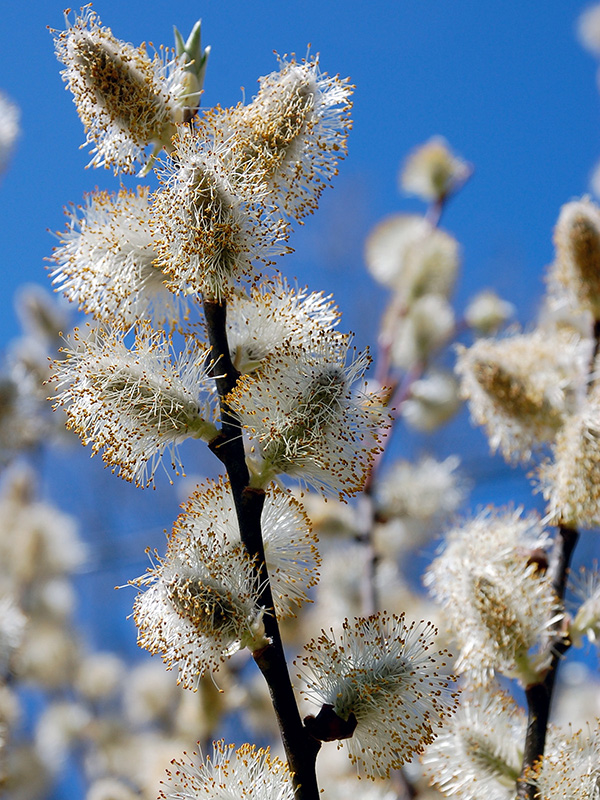
But then I learned from Douglas Tallamy’s book Bringing Nature Home that by far the most compelling reason to plant natives is that native insects (for the most part) can eat only native plants. Since insects are the foundation of the ecosystems WE HUMANS depend on, this is reason enough.
So what is a native plant?
As Wild Ones and most other organizations define native plants:
Native plants are those that evolved naturally in North America. More specifically, native plants in a particular area are those that were growing naturally in the area before humans introduced plants from distant places. In eastern and central North America, native plants typically grew in communities with species adapted to similar soil, moisture, and weather conditions.
I find that another definition of native appeals to me more — especially in this time of climate change. It’s from The Living Landscape by Rick Darke and Doug Tallamy (p. 93):
A plant or animal that has evolved in a given place over a period of time sufficient to develop complex and essential relationships with the physical environment and other organisms in a given ecological community.
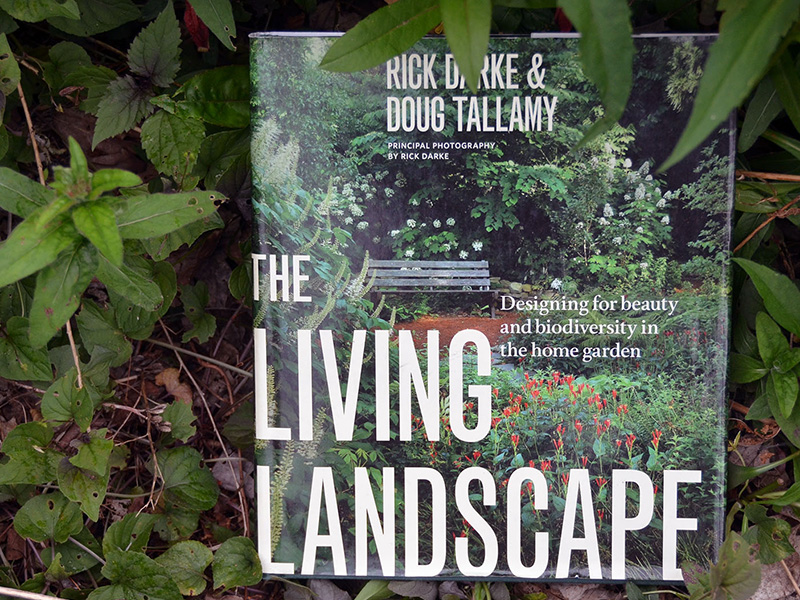
I suspect there’s a huge overlap in the plants that meet each of these definitions, but Tallamy’s definition allows for the possibility of plants being considered native if they perform the functions of a native plant. It also acknowledges that plant communities can change over time (though the 500 years or so Europeans have been in North America is not long on an evolutionary time scale).
Hardiness is not the same as native!
These slides from one of my presentations explain the difference between hardiness and native.
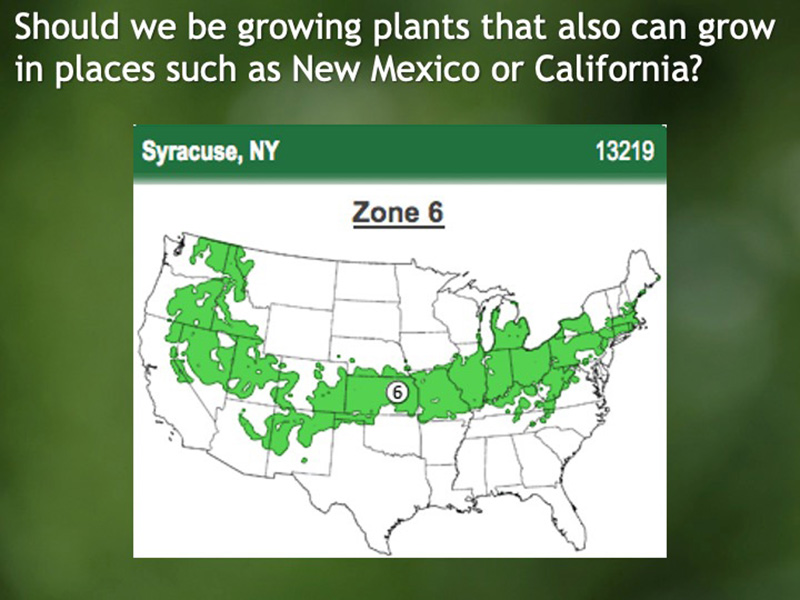
We’re accustomed to looking for plants that are suitable for our zone. This zone map from the Arbor Day Foundation indicates that Our Habitat Garden is in Zone 6. But Zone 6 extends across the continent, meaning that Zone 6 plants that are hardy here would also be hardy in many other parts of the US!
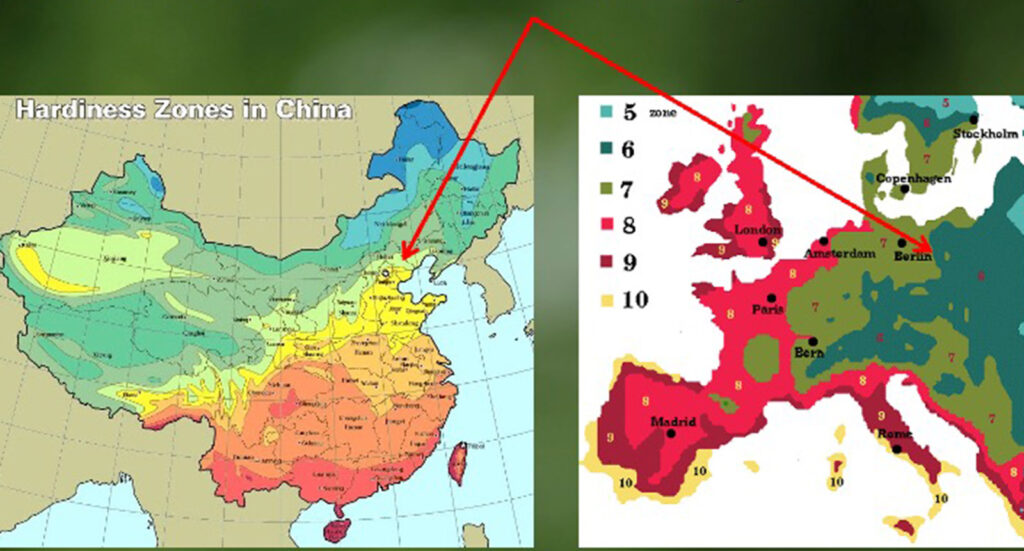
In fact, the arrows point to Hardiness Zone 6 that extends around the world, which is how non-native plants survive here.
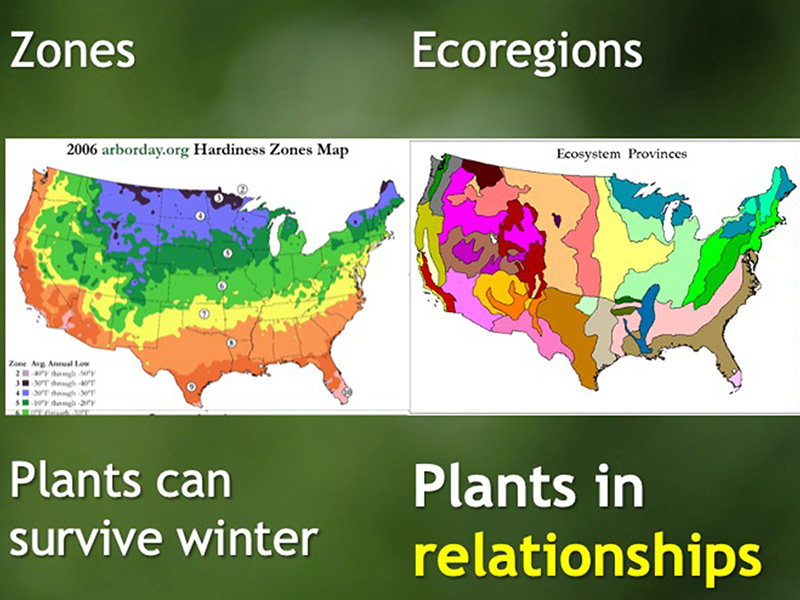
The hardiness zone map is quite different from the ecoregion zone map!
When we choose native plants, we’re choosing plants in relationships with other plants and animals.
Not all natives are created equal
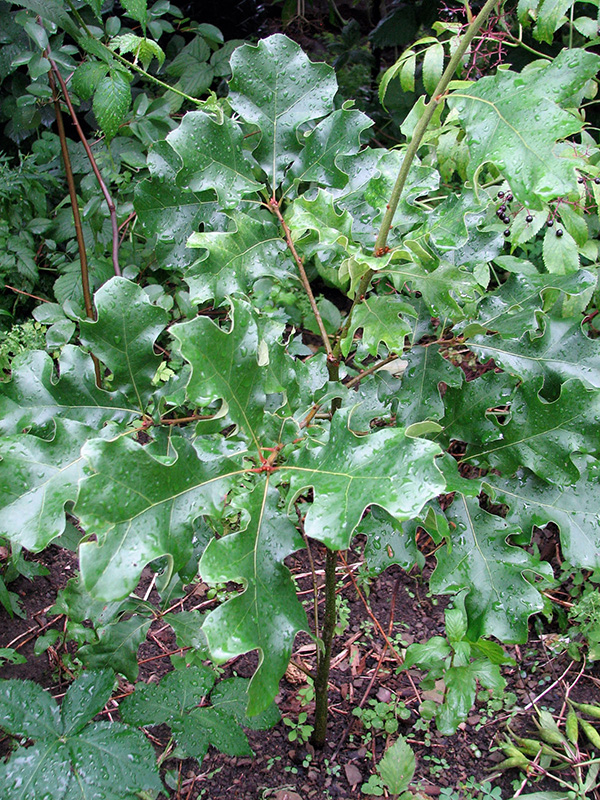
Some native plants are particularly important, known as “keystone” species because their loss would severely impact the entire ecosystem.
We’re trying to plant as many of these keystone species as possible, such as this red oak. And, of course, we choose plants that are key to our own ecoregion, which is Ecoregion 8: Eastern Temperate Forest. (And here’s a quick video by Tallamy describing keystone plants.)
NOTE: I’ve indicated in each section of my native plants which are Keystone plants.
CAUTION!
When I first started looking for native plants (around the early 2000s), I just looked for lists of “native plants.” What I wasn’t thinking about, though, is WHERE any given plant is native. In other words, while every plant (except man-made creations) is indeed “native somewhere,” it’s important to choose plants native to our own area. Too often, plants labeled as “native” simply mean they’re native to this continent, not native to a particular region. [See the Cornell short video “Reconsidering Cedar” in the Resources section below to see the damage a “native” out of place can do.]
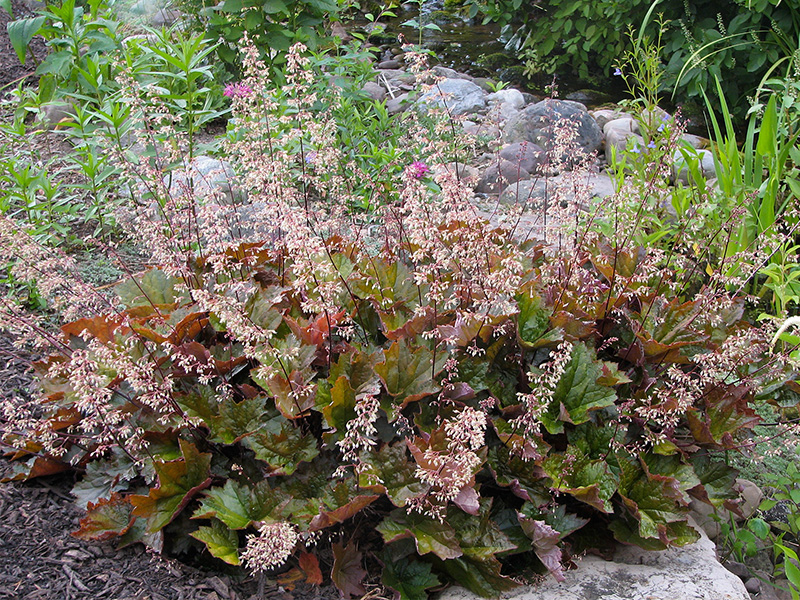
This Heuchera, for example, was labeled in a national big box store as “Native,” but I later discovered it’s native to the American Northwest — definitely NOT what should be considered native to CNY!
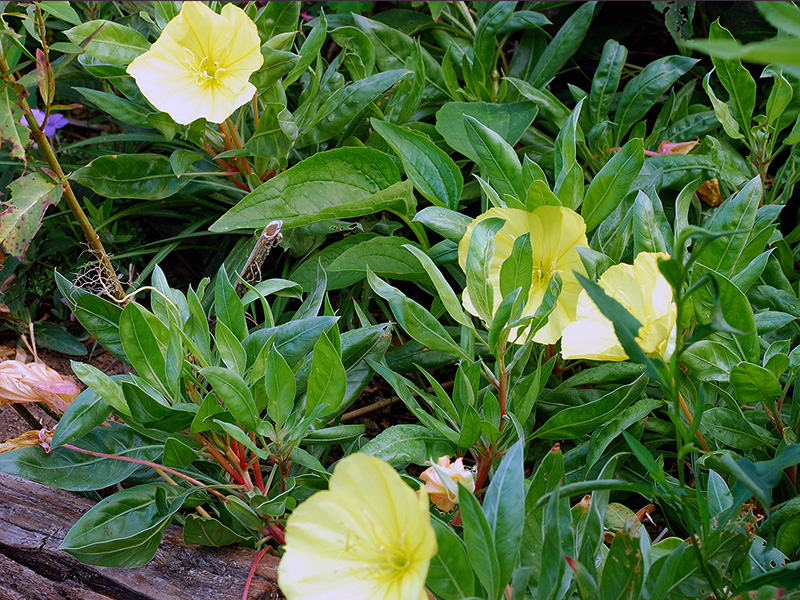
Another example is the Missouri primrose I planted. It is indeed a “native” plant — i.e. native to the Missouri region — but not native anywhere close to Central New York.
It eventually died and I didn’t replace it.
Our native plants
Plants from the Pacific Northwest, the Midwest, the Southeast aren’t “native” to CNY, though I often see them labeled as such in commercial nurseries. True native plant nurseries will know the difference!
But I have to admit I’ve been fairly generous in what I’ve considered native, generally looking for plants native to the Northeast-region, not strictly to CNY. Choosing to be more stringent than that didn’t seem feasible, especially since CNY was behind the rest of the country in having natives available. AND we do NOT gather plants from the wild!!
As we’ve gotten more native plant nurseries in CNY recently (in the early 2020s), I’ve tightened up my criteria.
I use BONAP, GoBotany, and the NY Flora Atlas as the criteria for determining what plants are native to my area.
Our native plants are described on these pages:
I’ve included information from the Lady Bird Johnson Wildflower Center about benefits to wildlife, including larval host plants and any special benefits to native bees or bumble bees as well as their deer resistant plant ratings. And there are links to the Wildflower Center’s page for each plant.
Our plant communities
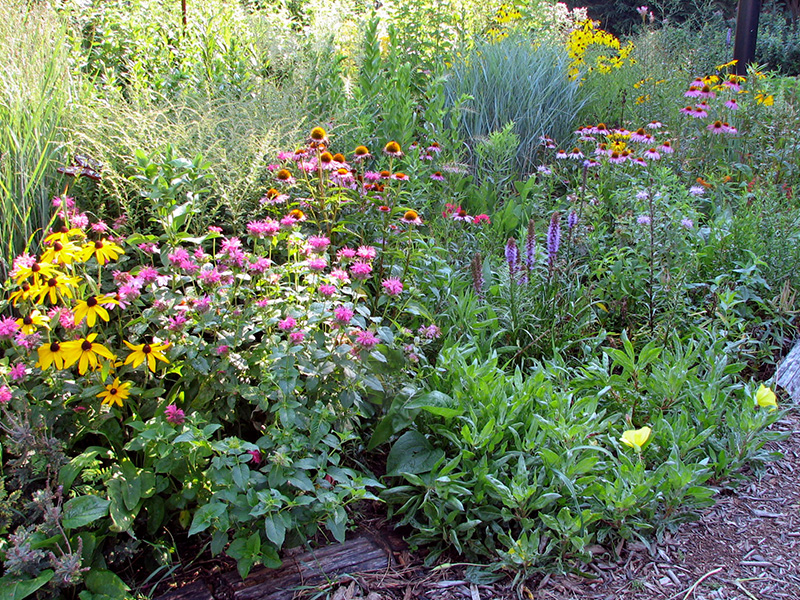
Beyond just planting native plants, though, I’ve tried to also think about the plant communities they’re part of. Plants in a natural ecosystem don’t grow in isolation. They’re part of a community that is much more than the sum of its individual plants.
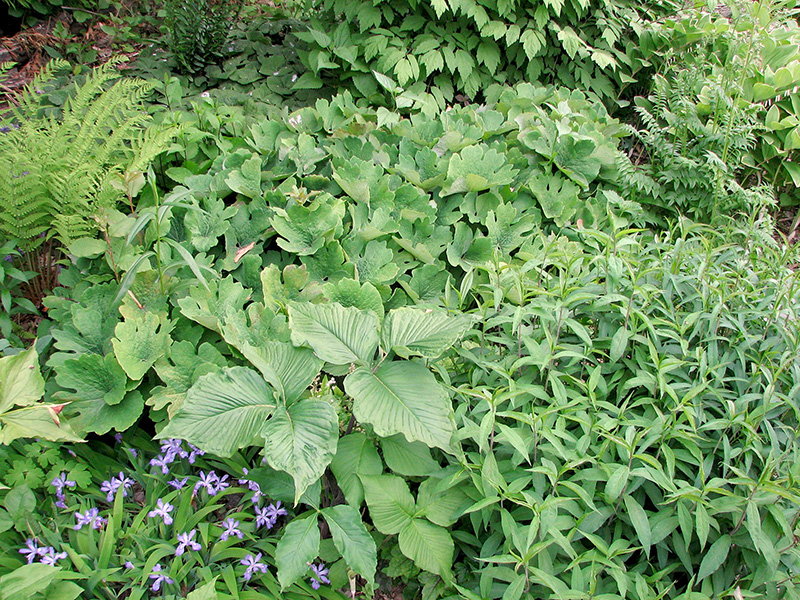
I’m afraid I haven’t been very successful in implementing this in my yard, beyond having meadow-type areas, woodland-type areas, and aquatic areas. They represent their respective communities, but I can’t say they’re an authentic ecological community of plants that belong together. So far, it seems far more difficult to learn about and to implement in our yard than I’ve yet been willing to attempt. I agree wholeheartedly with the concept, but so far the effort has been beyond me.
Since I’m probably more motivated and interested than most people in this area, I’d say it reinforces the idea that it’s far easier to preserve healthy ecosystems than to recreate them once they’ve been destroyed. Meanwhile, our society continues to blithely destroy the healthy ecosystems that remain, giving no thought to the future …
Although I don’t claim to have created actual plant communities, I keep these three communities in mind when I think about my yard. (More information on this is in the Design section.)
Our plant community-ish areas are described on these pages:
Resources
- Habitat Gardening in CNY Wild Ones chapter:
- Native Plant Shopping Guide – Free to download; updated each year
- BONAP:
- Biota of North American Program: Shows range of any plant, native or invasive
- EPA:
- Ecoregion maps; CNY is in the Laurentian Mixed Forest Province specifically, or more generally, Ecoregion 8: Eastern Temperate Forest
- National Wildlife Federation:
- Power Plants – explains keystone species
- VIDEO: Native keystone plants for wildlife – Doug Tallamy
- Native Plant Finder – EXCELLENT! Includes top caterpillars etc that use each plant!
- Keystone native plants for Ecoregion 8 – includes most of US east of Mississippi
- Wild Ones:
- VIDEO WEBINAR: Genetic diversity and plant preservation – Neil Diboll
- Homegrown National Park:
- Where to buy native plants
- VIDEO: Keystone plants – a short 2-min description by Doug Tallamy
- Container gardening with keystone plants
- Choose Natives:
- New York Flora Association:
- New York Flora Atlas – a wonderful resource! You can search even by specific counties! IMPORTANT NOTE: It includes ALL plants found in NYS. Don’t assume that every plant in the atlas is native. The search function It has a handy “Native” filter, though, so turn it on to search for only native plants.
- Native Plant Trust (formerly New England Wildflower Society):
- Why native plants matter
- What is native?
- Go Botany – A simple key online to ID all types of plants native to New England (NYS isn’t included, but so many of our plants are the same that it’s still a useful tool
- VIDEO: Edible Native Plants for the Shade – spicebush, Solomon’s seal, fiddlehead, etc.
- Grow Native Massachusetts:
- VIDEO: Cultivating wildlife conservation with native plants Desiree Narango – Excellent!
- Ecological Landscape Alliance:
- Sourcing native seeds – Three perspectives on local ecotype (I agree with Diboll!)
- Seedling identification – Photos to help you recognize your “volunteers”!
- Notable natives – large shrubs and small trees
- Cornell Lab of Ornithology:
- VIDEO: Reconsidering Cedar – 11 min.
- NRCS-USDA:
- Seedling ID guide for native prairie plants – Many are native in the Northeast, too
- Forb seedling identification
- Buffalo Niagara Riverkeeper:
- Native Plant Guide – an excellent guide to plants native to Western New York with descriptions of each (and most would also be native to Central New York
- Finger Lakes Native Plant Society:
- Finger Lakes plants suitable for gardens; also a list of invasive plants in the region
- Wildflower Center:
- Find Plants – Select New York in the State filter for a very useful list of plants native to NYS. You can further filter for plant habit etc.
- US Fish & Wildlife Service:
- Native Plants for Wildlife Habitat and Conservation Landscaping for the Chesapeake Bay Watershed – Great guide searchable and downloadable. CNY isn’t quite in this watershed, but it’s close and most of the plants are native here as well
- NYS DEC:
- Univ. of Rhode Island:
- Rhode Island Native Plant Guide – You can search on type, exposure, moisture, wildlife value, uses, and height; many are suitable for CNY, but confirm results for your area
- New York Times
- The Humane Gardener:
- Wild Seed Project:
- Anthropocene Magazine:
Reflections
For the past century we have created our gardens with one thing in mind: aesthetics. We have selected plants for landscaping based only on their beauty and their fit within our artistic designs.Yet if we designed our buildings the way we design our gardens, with only aesthetics in mind, they would fall down. Just as buildings need support structures—girders, I-beams, and headers—to hold the graceful arches and beautiful lines of fine architecture in place, our gardens need native plants to support a diverse and balanced food web essential to all sustainable ecosystems.
~ Douglas Tallamy, Bringing Nature Home, pp. 286-287
I firmly believe that if we all decide to make an effort to restore some of the local plants to our landscapes, we will in no small way help make our own piece of the world a richer, more diverse, and, by consequence, a healthier place. This is not politics, it is simple truth.
~ William Cullina, Wildflowers, p. 3
Oxygen. Food. Habitat.
These three words compose a short list of the essential conditions for life that plants provide to all organisms on Earth, including humans. Plants also regulate the climate and clean the water. But nothing on the planet can live without these three.
Native plants are the cornerstone of Earth’s ecosystems and the base of the food chain that leads to our dinner tables. They evolved in and define particular locations, where they provide the habitats—food and shelter—that specific insects, birds, mammals, and other animals need. Together, native plants and animals form a web of mutually beneficial interactions that is greater than the sum of its parts: an ecosystem.
By conserving native plants in the wild and using them in designed spaces, we protect and enhance the integrity, resilience, diversity, and beauty of our planet.
~ Native Plant Trust: All life on earth depends on plants
Working with native plants is such a joy. The more you use them in the landscape, the more alive it becomes — with birds, butterflies, bees and pollinators — and even amphibians and reptiles if we are lucky, and if we do enough to create healthy plant communities and ecosystems. I really want the American toad to find a home in my garden.
~ Claudia Thompson, Founder, Grow Native Massachusetts
Plant communities are described as many, often interdependent, species of plants which grow under similar environmental conditions, i.e., soils, climate, hydrology, etc. Unless there are abrupt changes in environmental conditions, communities are seldom distinct and blend together to some degree. In Central New York, there are three major plant community types: Woodland, Meadow and Aquatic.
~ from Home Landscapes for Environmental Sensitivity
